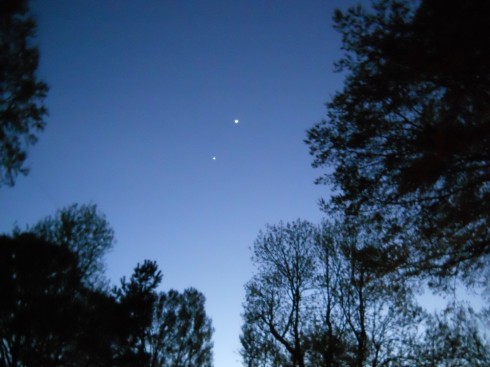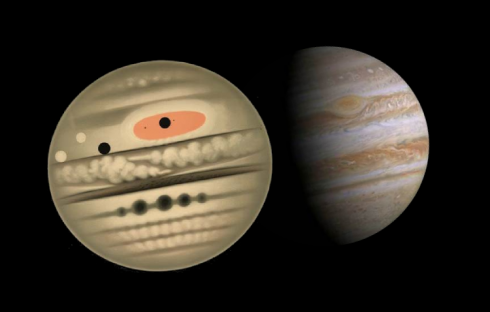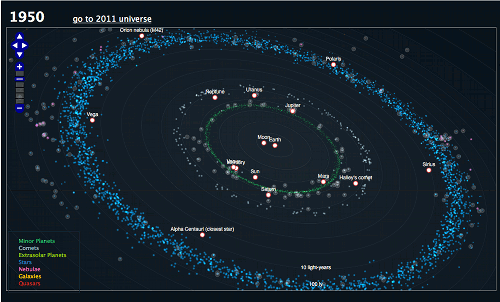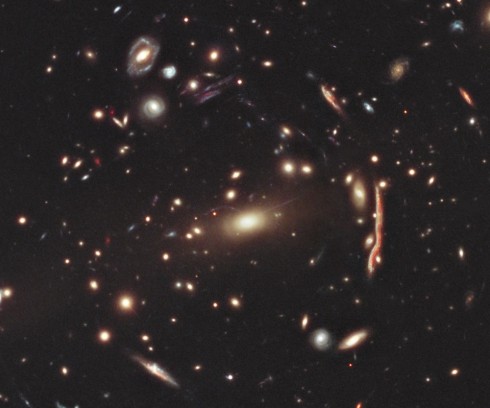The Earth will end with fire, non-metaphorically. It will be consumed when the sun expands as it runs out of fuel, 5 billion years from now.
Tag: astronomy
The History of the Moon
In the early solar system, 4.5 billion years ago, the planets were still coalescing, something enormous hit the Earth.
After it formed, huge impacts shaped the surface of the moon into what we see today. NASA takes up the story:
These videos are awesome introductions to the early history of the Earth, Moon, and solar system.
Why Feburary 29th?
CGP Grey explains why we need leap days to fill in the calender.
Jupiter and Venus in Conjuction

Jupiter and Venus have been sitting near the western horizon, shining so brightly that even I have noticed them. Phil Plait explains with some back-of-the-envelope math, why Venus is brighter even though it’s smaller than Jupiter. It’s a nice example of how a little math can do a great job explaining how the world (and others) works.
Phases of the Moon
BadAstronomer has posted an awesome video of the moon going through its phases for an entire year.
(it’s particularly awesome in full screen and HD.)
The video is based off a NASA webpage that will generate a picture of the moon for any hour, of any day, in the year of 2012 (and only if you’re in the northern hemisphere near the equator, but close enough). They have lots more videos and images.
Interestingly, the images are all computer generated — they’re not real photos. They are based on high-resolution images and topography data taken by the Lunar Reconnaissance Orbiter.
Drawings of Jupiter

The New York Public Library’s website hosts a remarkable collection of Étienne Léopold Trouvelot‘s astronomical drawings by that date back to 19th century.
The beauty and detail of these illustrations are a remarkable testament to the intersection of art and science.
The Visible Universe
Everything depends on your point of view — more or less. Our picture of the universe has changed in the last 60 years as telescope technology has improved. Popsci has a great interactive visualization showing how much more we can see now.
Notice that in this picture, the Earth is at the center of the universe (the Sun is a little way off to the middle lower left). After all, we’re looking at the universe from the Earth, not the other way around.

A Galactic Cluster

The galaxy cluster MACS J1206. Galaxy clusters like these have enormous mass, and their gravity is powerful enough to visibly bend the path of light, somewhat like a magnifying glass.
These so-called lensing clusters are useful tools for studying very distant objects, because this lens-like behaviour amplifies the light from faraway galaxies in the background. They also contribute to a range of topics in cosmology, as the precise nature of the lensed images encapsulates information about the properties of spacetime and the expansion of the cosmos.
–NASA, ESA, M. Postman (STScI) and the CLASH Team: Hubble image of galaxy cluster MACS J1206
